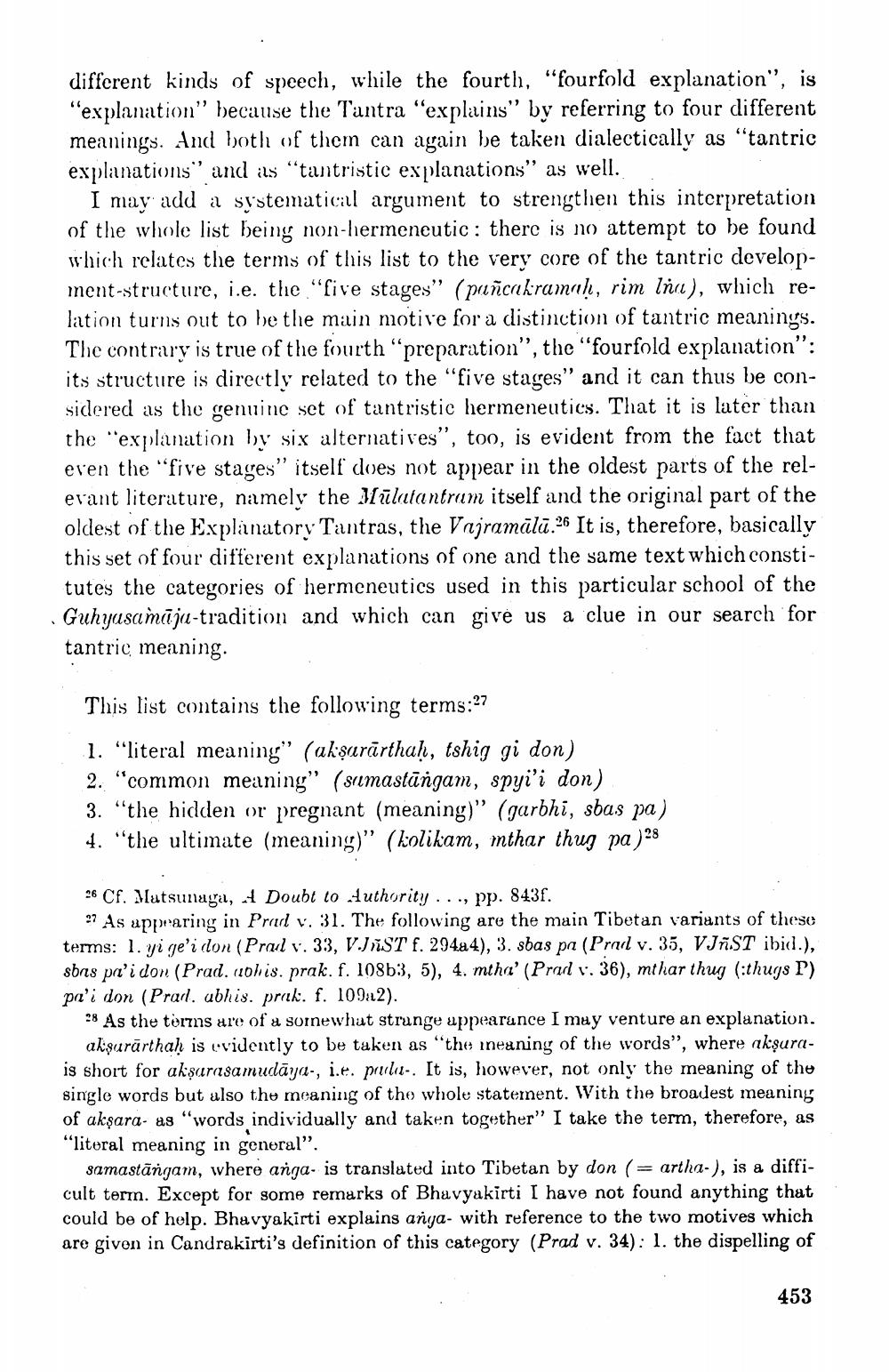________________
different kinds of speech, while the fourth, "fourfold explanation", is "explanation" because the Tantra "explains" by referring to four different meanings. And both of them can again be taken dialectically as "tantric explanations and ils “tantristic explanations" as well.
I may add a systematical argument to strengthen this interpretation of the whole list being non-hermeneutic: there is no attempt to be found which relates the terms of this list to the very core of the tantric development-structure, i.e. the "five stages" (pañcakramah, rim lýn), which relation turns out to be the main motive for a distinction of tantric meaninys. The contrary is true of the fourth "preparation", the "fourfold explanation": its structure is directly related to the “five stages" and it can thus be considered as the genuine set of tantristic hermeneutics. That it is later than the "explanation by six alternatives”, too, is evident from the even the "five stages” itself does not appear in the oldest parts of the relerant literature, namely the Jūlatantram itself and the original part of the oldest of the Explanatory Tantras, the Vajramālū.26 It is, therefore, basically this set of four different explanations of one and the same text which constitutes the categories of hermeneutics used in this particular school of the Guhyasamaju-tradition and which can give us a clue in our search for tantric meaning.
This list contains the following terms:27 1. "literal meaning" (akşurărthaḥ, tshig gi don) 2. "common meaning" (sumastūngam, spyi’i don) 3. "the hidden or pregnant (meaning)” (garbhi, sbas pa) 4. "the ultimate (meaning)” (kolikam, mthar thug pa )28
26 CF. Matsunaga, at Doubt to futhority..., pp. 843f.
27 As uppearing in Praed v. 31. The following are the main Tibetan variants of these terms: 1. yi ge'i don (Praul v. 33, V.JPST f. 294a 4), 3. sbas pa (Prod v. 35, VINST ibid.), sbris pa'i don (Prad. (ohis. prak. f. 108b3, 5), 4. mtha' (Prad v. 36), mthar thug (:thugs P) pa'i don (Prad. abhis. prk. f. 109a2).
28 As the terms are of a somewhat strunge appearance I muy venture an explanation.
akşurarthah is evidently to be taken as "the ineaning of the words", where akşurais short for akşarısamudāya., i.e. paulu-. It is, however, not only the meaning of the single words but also the meaning of the whole statement. With the broadest meaning of akşara- as "words individually and taken together" I take the term, therefore, as "literal meaning in general”.
samastāngam, where anga- is translated into Tibetan by don (= artha-), is a difficult term. Except for some remarks of Bhavyakirti I have not found anything that could be of help. Bhavyakirti explains anya- with reference to the two motives which are given in Candrakirti's definition of this category (Prad v. 34): 1. the dispelling of
453




